4.7: Socialization Throughout the Life Span
- Last updated
- Save as PDF
- Page ID
- 57047

- Boundless
- Boundless
Socialization Throughout the Life Span
Socialization is the lifelong process of preparing an individual to live within his or her own society.
Learning Objectives
Discuss the concept of both primary and secondary socialization as a lifelong process which begins in infancy and continues into late adulthood
Key Points
- Socialization is the lifelong process of inheriting and disseminating norms, customs and ideologies, providing an individual with the skills and habits necessary for participating within his or her own society.
- Socialization is the process by which human infants acquire the skills necessary to perform as a functioning member of their society, a process that continues throughout an individual’s life.
- The socialization process can be divided into primary and secondary socialization. Primary socialization occurs when a child learns the attitudes, values and actions appropriate to individuals as members of a particular culture. This is mainly influenced by the immediate family and friends.
- Secondary socialization is the process of learning what is the appropriate behavior as a member of a smaller group within the larger society. It is the behavioral patterns reinforced by socializing agents of society. like schools and workplaces.
- The life course approach was developed in the 1960s for analyzing people’s lives within structural, social and cultural contexts.
Key Terms
- socialization: The process of learning one’s culture and how to live within it.
- agent: One who exerts power, or has the power to act; an actor.
Socialization refers to the lifelong process of inheriting and disseminating norms, customs and ideologies that provide an individual with the skills necessary for participating within society. Socialization is a process that continues throughout an individual’s life. Some social scientists say socialization represents the process of learning throughout life and is a central influence on the behavior, beliefs and actions of adults as well as of children.
George Herbert Mead (1902–1994) developed the concept of self as developed with social experience. Since social experience is the exchange of symbols, people find meaning in every action, and seeking meaning leads people to imagine the intention of others from the others’ point of view. In effect, others are a mirror in which we can see ourselves. Charles Horton Cooley (1902-1983) coined the term “looking glass self;” the self -image based on how we think others see us. According to Mead, the key to developing the self is learning to take the role of the other. With limited social experience, infants can only develop a sense of identity through imitation. Children gradually learn to take the roles of several others. The final stage is the generalized other; the widespread cultural norms and values we use as a reference for evaluating others.
Primary and Secondary Socialization
The socialization process can be divided into primary and secondary socialization. Primary socialization occurs when a child learns the attitudes, values and actions appropriate to individuals as members of a particular culture. This is mainly influenced by the immediate family and friends. Secondary socialization is the process of learning what is the appropriate behavior as a member of a smaller group within the larger society. It is the behavioral patterns reinforced by socializing agents of society like schools and workplaces. For example, as new employees become socialized in an organization, they learn about its history, values, jargon, culture and procedures.

The Life Course Approach
The life course approach was developed in the 1960s for analyzing people’s lives within structural, social and cultural contexts. Origins of this approach can be traced to such pioneering studies as Thomas’s and Znaniecki’s “The Polish Peasant in Europe and America” from the 1920s or Mannheim’s essay on the “Problem of generations. ” The life course approach examines an individual’s life history and how early events influence future decisions.
The Life Course
The life course approach analyzes people’s lives within structural, social, and cultural contexts.
Learning Objectives
Explain the life course perspective as it relates to a person’s development from infancy to old age, in terms of structural, social and cultural contexts
Key Points
- The life course approach refers to an approach developed in the 1960s for analyzing people’s lives within structural, social, and cultural contexts.
- The life course approach examines an individual’s life history and sees for example how early events influence future decisions and events, giving particular attention to the connection between individuals and the historical and socioeconomic context in which they lived.
- In a more general reading of the life course, human life is seen as divided into stages, which are somewhat arbitrary, but capture periods of life that are similar across cultures. These stages of life often inform and are reinforced by legal definitions of life stages.
Key Terms
- socioeconomic: Of or pertaining to social and economic factors.
- life course: the sequence of events, roles and age categories that people pass through from birth until death, all of which are culturally defined
- age: Mature age; especially, the time of life at which one attains full personal rights and capacities.
The life course approach, also known as the life course perspective, or life course theory, refers to an approach developed in the 1960s for analyzing people’s lives within structural, social, and cultural contexts. Origins of this approach can be traced to pioneering studies such as Thomas’s and Znaniecki’s “The Polish Peasant in Europe and America” from the 1920s or Mannheim’s essay on the “Problem of generations”.
The life course approach examines an individual’s life history and sees for example how early events influence future decisions and events, giving particular attention to the connection between individuals and the historical and socioeconomic context in which they have lived. It holds that the events and roles that are part of the person’s life course do not necessarily proceed in a given sequence, but rather constitute the sum total of the person’s actual experience.
In a more general reading, human life is seen as often divided into various age spans such as infancy, toddler, childhood, adolescence, young adult, prime adulthood, middle age, and old age. These divisions are somewhat arbitrary, but generally capture periods of life that reflect a certain degree of similarity in development across cultures.

In many countries, such as Sweden and the United States, adulthood legally begins at the age of eighteen. This is a major age milestone that is marked by significantly different attitudes toward the person who undergoes the transition. This is an example that demonstrates the influence of developmental stages on legal determinations of life stages, and thus, attitudes towards people at different stages of the human life course.
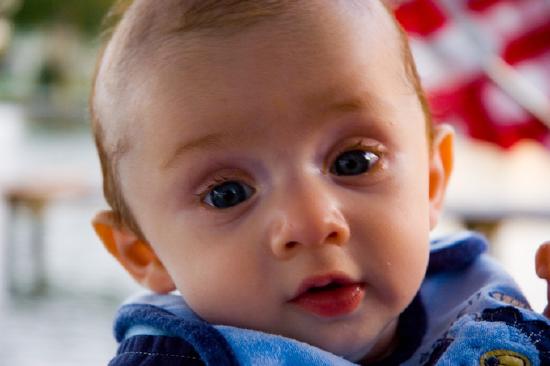
Anticipatory Socialization and Resocialization
Anticipatory socialization comes from an individual’s desire to join a group while resocialization is imposed upon an individual by a group.
Learning Objectives
Explain the two steps associated with the resocialization process and how people use anticipatory socialization as a means to gain entrance into desired social groups
Key Points
- Anticipatory socialization is the process of changing one’s attitudes and behaviors in preparation for a shift in one’s role.
- The process of anticipatory socialization is facilitated by social interactions with the group they aspire to join.
- Resocialization is radically changing an inmate’s personality by carefully controlling their environment.
- Resocialization is a two-part process. First, the staff of the institution tries to erode the residents’ identities and independence. Second, there is a systematic attempt to build a different personality or self.
Key Terms
- Social interactions: It refers to a relationship between two (i.e. a dyad), three (i.e. a triad) or more individuals (e.g. a social group).
- Anticipatory socialization: Anticipatory socialization is the process, facilitated by social interactions, in which non-group-members learn to take on the values and standards of groups that they aspire to join, so as to ease their entry into the group and help them interact competently once they have been accepted by it.
Anticipatory Socialization
Anticipatory socialization is the process by which non-group-members adopt the values and standards of groups that they aspire to join, so as to ease their entry into the group and help them interact appropriately once they have been accepted. It involves changing one’s attitudes and behaviors in preparation for a shift in one’s role. Practices commonly associated with anticipatory socialization include grooming, play-acting, training, and rehearsing. Examples of anticipatory socialization include law school students learning how to behave like lawyers, older people preparing for retirement, and Mormon boys getting ready to become missionaries.
Anticipatory socialization was first defined by sociologist Robert K. Merton. It has its origins in a 1949 study of the United States military which found that privates who modeled their attitudes and behaviors on those of officers were more likely to be promoted than those who did not.
When people are blocked from access to a group they might have wanted to join, they reject that group’s values and norms. Instead, they begin an anticipatory socialization process with groups that are more receptive to them. One example of this is the case of economically disadvantaged teenagers who seek to become drug dealers rather than professionals. While some critics would claim that these individuals lack motivation, some sociologists say they are simply making a pragmatic adjustment to the opportunities available to them.
Resocialization
Resocialization is defined as radically changing someone’s personality by carefully controlling their environment. Total institutions aim to radically alter residents’ personalities through deliberate manipulation of their environment. Key examples include the process of resocializing new recruits into the military so that they can operate as soldiers (or, in other words, as members of a cohesive unit) and the reverse process, in which those who have become accustomed to such roles return to society after military discharge. Resocialization may also be required for inmates who come out of prison and need to acclimate themselves back into civilian life.
Resocialization is a two-part process. First, the staff of the institution tries to erode the residents’ identities and sense of independence. Strategies include forcing individuals to surrender all personal possessions, cut their hair in a uniform manner, and wear standardized clothing. Independence can be eroded by subjecting residents to humiliating and degrading procedures. Examples include strip searches, fingerprinting, and replacing residents’ given names with serial numbers or code names. Second, resocialization involves the systematic attempt to build a different personality or self. This is generally accomplished through a system of rewards and punishments. The privilege of reading a book, watching television, or making a phone call can be powerful motivation to conform. Conformity occurs when individuals change their behavior to fit the expectations of an authority figure or the expectations of a larger group.

Stages of Socialization Throughout the Life Span
The socialization process can be separated into two main stages: primary socialization and secondary socialization.
Learning Objectives
Give examples of how the socialization process progresses throughout a person’s life
Key Points
- The life process of socialization is generally divided into two parts: primary and secondary socialization.
- Primary socialization takes place early in life, as a child and adolescent. This is when an individual develops their core identity.
- Secondary socialization takes place throughout an individual’s life, both as a child and as one encounters new groups. This involves more specific changes in response to the acquisition of new group memberships and roles and differently structured social situations.
- Some of the more significant contributors to the socialization process are: parents, guardians, friends, schools, siblings or other family members, social clubs (like religions or sports teams), life partners (romantic or platonic), and co-workers.
Key Terms
- secondary socialization: The socialization that takes place throughout one’s life, both as a child and as one encounters new groups that require additional socialization.
- primary socialization: The socialization that takes place early in life, as a child and adolescent.
Socialization is a life process, but is generally divided into two parts: primary and secondary socialization.

Primary socialization takes place early in life, as a child and adolescent. Secondary socialization refers to the socialization that takes place throughout one’s life, both as a child and as one encounters new groups that require additional socialization. While there are scholars who argue that only one or the other of these occurs, most social scientists tend to combine the two, arguing that the basic or core identity of the individual develops during primary socialization, with more specific changes occurring later—secondary socialization—in response to the acquisition of new group memberships and roles and differently structured social situations. The need for later-life socialization may stem from the increasing complexity of society with its corresponding increase in varied roles and responsibilities.

Mortimer and Simmons outline three specific ways these two parts of socialization differ:
- Content: Socialization in childhood is thought to be concerned with the regulation of biological drives. In adolescence, socialization is concerned with the development of overarching values and the self-image. In adulthood, socialization involves more overt and specific norms and behaviors, such as those related to the work role as well as more superficial personality features.
- Context: In earlier periods, the socializee (the person being socialized) more clearly assumes the status of learner within the context of the initial setting (which may be a family of orientation, an orphanage, a period of homelessness, or any other initial social groups at the beginning of a child’s life), the school (or other educational context), or the peer group. Also, relationships in the earlier period are more likely to be affectively charged, i.e., highly emotional. In adulthood, though the socializee takes the role of student at times, much socialization occurs after the socializee has assumed full incumbency of the adult role. There is also a greater likelihood of more formal relationships due to situational contexts (e.g., work environment), which moderates down the affective component.
- Response: The child and adolescent may be more easily malleable than the adult. Also, much adult socialization is self-initiated and voluntary; adults can leave or terminate the process at any time if they have the proper resources (symbolic, financial, and social) to do so.
Socialization is, of course, a social process. As such, it involves interactions between people. Socialization, as noted in the distinction between primary and secondary, can take place in multiple contexts and as a result of contact with numerous groups. Some of the more significant contributors to the socialization process are: parents, guardians, friends, schools, siblings or other family members, social clubs (like religions or sports teams), life partners (romantic or platonic), and co-workers. Each of these groups include a culture that must be learned and to some degree appropriated by the socializee in order to gain admittance to the group.
Childhood
Childhood has been constructed in different ways over time, though modern childhood is often defined by play, learning and socializing.
Learning Objectives
Evaluate the importance of childhood (early, middle and adolescence) in terms of socialization and acceptance in society
Key Points
- Contemporary conceptions of childhood generally divide the period into three main stages: early childhood ( toddlerhood ), middle childhood, and adolescence.
- Childhood is not an absolute concept defined by age and experience. Instead, childhood as a concept has been conceived in very different manners over time.
- American culture figures outdoor play as an essential part of childhood, though the reality is that children are increasingly playing indoors.
Key Terms
- toddlerhood: The period of one’s life in which one is a toddler
- adolescence: The transitional period of physical and psychological development between childhood and maturity.
- middle childhood: It is the school age and begins at around seven or eight.
Childhood is the age span ranging from birth to adolescence. In developmental psychology, childhood is divided up into the developmental stages of toddlerhood (learning to walk), early childhood (play age), middle childhood (school age), and adolescence ( puberty through post-puberty).
Age Ranges of Childhood
The term childhood is non-specific and can imply a varying range of years in human development, depending on biological, personal, religious, cultural, or national interpretations. Developmentally and biologically, it refers to the period between infancy and puberty. In common terms, childhood is considered to start from birth. Some consider that childhood, as a concept of play and innocence, ends at adolescence. In the legal systems of many countries, there is an age of majority at which point childhood officially ends and a person legally becomes an adult. Globally, the age of majority ranges anywhere from 15 to 21, with 18 being the most common.
Developmental Stages of Childhood
Early childhood follows the infancy stage and begins with toddlerhood, reached when the child begins speaking or taking steps independently. Toddlerhood ends around age three when the child becomes less dependent on parental assistance for basic needs and early childhood continues approximately through years seven or eight. According to the National Association for the Education of Young Children, early childhood spans the from birth to age eight.
In most western societies, middle childhood begins at around age seven or eight, approximating primary school age and ends around puberty, which typically marks the beginning of adolescence.
Adolescence is usually determined by the onset of puberty. However, puberty may also begin in preadolescents. The end of adolescence and the beginning of adulthood varies by country. Even within a single nation- state or ethic group there may be different conceptions of when an individual is considered to be (chronologically and legally) mature enough to be entrusted by society with certain tasks.
Modern Concepts of Childhood
The concept of childhood appears to evolve and change shape as lifestyles change and adult expectations alter. Some believe that children should not have any worries and should not have to work; life should be happy and trouble-free. Childhood is generally a time of playing, learning, socializing, exploring, and worrying in a world without much adult interference, aside from parents. It is a time of learning about responsibilities without having to deal with adult responsibilities.
Childhood is often retrospectively viewed as a time of innocence. According to this view, children have yet to be negatively influenced by society and are naive, rather than ignorant. A “loss of innocence” is a common concept, and is often seen as an integral part of coming of age. It is usually thought of as an experience or period in a child’s life that widens their awareness of evil, pain or the world around them. This theme is demonstrated in the novels To Kill a Mockingbird and Lord of the Flies. The fictional character Peter Pan is the embodiment of a childhood that never ends.
Play
Play is essential to the cognitive, physical, social, and emotional well-being of children. It offers children opportunities for physical (running, jumping, climbing, etc.), intellectual (social skills, community norms, ethics, and general knowledge) and emotional development (empathy, compassion, and friendships). Unstructured play encourages creativity and imagination and allows children to interact with the world around them. Playing and interacting with other children, as well as with some adults, provides opportunities for friendships, social interactions, practicing adult roles, and resolving conflicts.
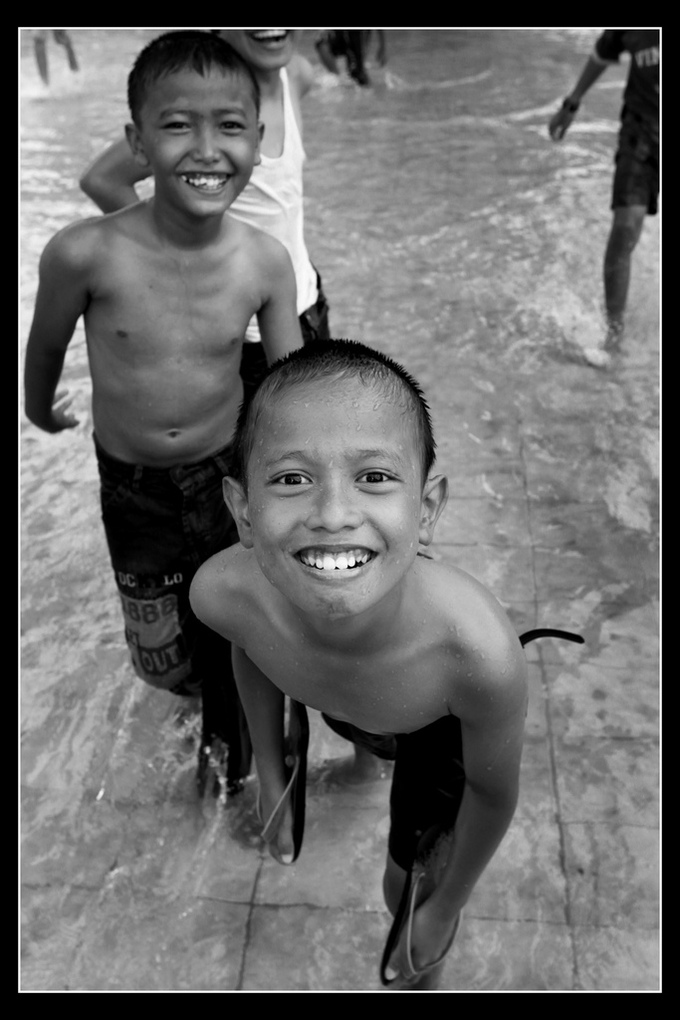
Undirected play allows children to learn how to work in groups, to share, to negotiate, to resolve conflicts, and to learn self-advocacy skills. However, when play is controlled by adults, children acquiesce to adult rules and concerns and lose some of the benefits play offers them, particularly in developing creativity, leadership, and group skills.
Play is considered to be so important to optimal child development that it has been recognized by the United Nations High Commission for Human Rights as a right of every child. Raising children in a hurried and pressured style may limit the benefits they would gain from child-driven play.
American culture considers outdoor play as an essential part of childhood. However, the reality is that children are increasingly playing indoors. Nature Deficit Disorder, a term coined by Richard Louv in his 2005 book Last Child in the Woods, refers to the alleged trend in the United States that children are spending less time outdoors, resulting in a wide range of behavioral problems. With the advent of the computer, video games, and television, children have more reasons to stay inside rather than outdoors exploring. On average, American children spend forty-four hours per week with electronic media. Parents are also keeping children indoors in order to protect them from their growing fear of stranger danger.
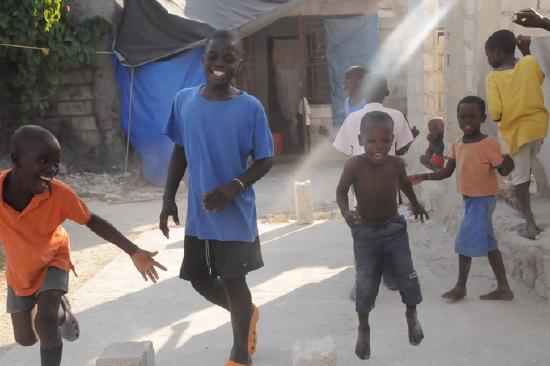
Adolescence
Adolescence is a period of significant cognitive, physical and social development, including changes in family and peer relationships.
Learning Objectives
Discuss the influences on, and significance of, adolescent socialization and development, culminating in the development of autonomy
Key Points
- In addition to biological and social development, adolescents are also subject to a varied experiences across cultures depending on norms and expectations around sexuality, autonomy and occupation.
- Today, media has a significant influence on the experience and conceptions of adolescents, particularly in Westernized societies.
- The experience of adolescence is influenced by external factors like cultural norms and the media.
Key Terms
- adolescence: The transitional period of physical and psychological development between childhood and maturity.
- puberty: the age at which a person is first capable of sexual reproduction
Adolescence is a transitional stage of physical and psychological human development, generally occurring between puberty and legal adulthood. Though the period of adolescence is most closely associated with the teenage years, chronological age provides only a rough marker of adolescence, and scholars have found it difficult to agree upon a precise definition. Thus, a thorough understanding of adolescence depends on information from various perspectives, most importantly from the areas of psychology, biology, history, sociology, education, and anthropology. Within all of these disciplines, adolescence is viewed as a transitional period between childhood with the purpose of preparing children for adult roles.
The end of adolescence and the beginning of adulthood varies by country and by function. Even within a single nation-state or culture, there can be different ages at which an individual is considered to be (chronologically and legally) mature enough to handle certain tasks. In the west, such “coming of age” milestones include driving a vehicle, having legal sexual relations, serving in the armed forces or on a jury, purchasing and drinking alcohol, voting, entering into contracts, completing certain levels of education, and marrying. Adolescence is usually accompanied by increased independence and less supervision by parents or legal guardians.
The study of adolescent development often involves interdisciplinary collaborations. For example, researchers in neuroscience or bio-behavioral health might focus on pubertal changes in brain structure and its effects on cognition or social relations. Sociologists interested in adolescence might focus on the acquisition of social roles (e.g., worker or romantic partner) and how this varies across cultures or social conditions. Developmental psychologists might focus on changes in relations with parents and peers as a function of school structure and pubertal status.
Peer Relationships
Peer groups are especially important during adolescence, a period of development characterized by a dramatic increase in time spent with peers and a decrease in adult supervision. Adolescents also associate with friends of the opposite sex much more than in childhood and tend to identify with larger groups of peers based on shared characteristics.
Peer groups offer members the opportunity to develop various social skills like empathy, sharing and leadership. They can have positive influences on an individual, including academic motivation and performance. They can also have negative influences and lead to an increase in experimentation with drugs, drinking, vandalism, and stealing. Susceptibility to peer pressure increases during early adolescence, peaks around age 14, and declines thereafter.
During early adolescence, adolescents often associate in cliques; exclusive, single-sex groups of peers with whom they are particularly close. Toward late adolescence, cliques often merge into mixed-sex groups as teenagers begin romantically engaging with one another. These small friend groups break down even further as socialization becomes more couple-oriented. Despite the common notion that cliques are an inherently negative influence, they may help adolescents become socially acclimated and form a stronger sense of identity.
Romance and Sexual Activity
Romantic relationships tend to increase in prevalence throughout adolescence. By age 15, 53 percent of adolescents have had a romantic relationship that lasted at least one month over the course of the previous 18 months. A 2002 American study found that the average age of first sexual intercourse was 17 for males and 17.3 for females. As individuals develop into mature adolescents, there is an increase in the likelihood of a long-term relationship, which can be explained by sexual maturation and the development of cognitive skills necessary to maintain a romantic bond (e.g. caregiving, appropriate attachment). Long-term relationships allow adolescents to gain skills necessary for high-quality relationships later in life and contribute to development of feelings of self-worth.
Adolescence marks a time of sexual maturation, which impacts the types of social interactions adolescents maintain. While adolescents may engage in casual sexual encounters (often referred to as hookups in the United States), most sexual experience during this period of development takes place within romantic relationships.
Autonomy
Adolescents strive for autonomy. According to McElhaney et al., there are three ways in which autonomy can be described:
- Emotional autonomy is the development of more adult-like close relationship with adults and peers
- Behavioral autonomy, is the ability to make independent decisions and follow through with them
- Cognitive autonomy is characterized as the manifestation of an independent set of beliefs, values and opinions
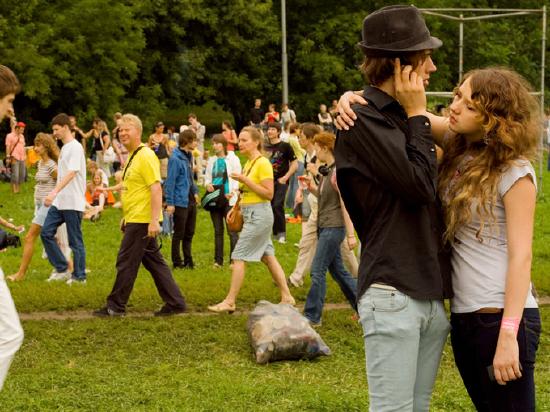
Transitional Adulthood
Coming of age traditions, while different across the world, are seen in almost every society.
Learning Objectives
Discuss how a young person “comes of age”, particularly in the context of religion or rituals
Key Points
- In many cultures, the transition from childhood to adulthood is marked by a coming of age tradition. In some, such traditions are associated with the arrival of sexual maturity in early adolescence; in others, it is associated with the arrival of new religious responsibilities.
- Often, coming of age traditions are religious, and signify that the individual is taking on a different role in his or her religious life, such as the Jewish bar mitzvah or Hindu ceremonies celebrating maturity.
- Other times these traditions are secular in nature and can range from legal benefits to extravagant parties.
Key Terms
- coming of age: A person’s journey from childhood or adolescence to adulthood.
“Coming of age” refers to a young person’s transition from childhood to adulthood. The age at which this transition takes place varies among different societies, as does the nature of the transition. It can be a simple legal convention or can be part of a larger ritual. In some societies today, such changes are associated with the arrival of sexual maturity in early adolescence; in others, it is associated with the arrival of an age at which point one carries religious responsibilities. In western societies, legal conventions stipulate points in late adolescence or early adulthood that mark the age of maturity are the focus of the transition. Still, many cultures retain ceremonies to confirm the coming of age and benefits come with the change.
Religion
Religion is often a determinant of when and how individuals come of age.
When members of the Baha’i faith turn 15, they reach the “age of maturity” and are considered spiritually mature, and are responsible for individually determining whether they wish to remain members of Baha’i. Those who declare that they wish to remain members of Baha’i are expected to begin observing certain Baha’i laws, such as obligatory prayer and fasting.
In many Christian churches, a young person celebrates his or her coming of age with the Sacrament of Confirmation. Some traditions withhold the rite of Holy Communion from those not yet at the age of accountability on the grounds that children do not understand what the sacrament means. In some denominations, full membership in the church, if not bestowed at birth, often must wait until the age of accountability, and is frequently granted only after a period of preparation known as catechesis. The time of innocence before one has the ability to understand truly the laws of God, and during which God sees one as innocent, is also seen as applying to individuals who suffer from a mental disability which prevents them from ever reaching a time when they are capable of understanding the laws of God. These individuals are thus seen as existing in a perpetual state of innocence by the grace of God.
In Hinduism, coming of age generally signifies that a boy or girl are mature enough to understand his responsibility towards family and society. Hinduism also has the sacred thread ceremony for Dvija (twice-born) boys that marks their coming of age to do religious ceremonies. Women often celebrate their coming to age by having a ceremony. This ceremony includes dressing themselves in saris and announcing their maturity to the community
In Islam, children are not required to perform any obligatory acts of Islamic teachings prior to reaching the age of puberty, although they should be encouraged to begin praying at the age of seven. Before reaching puberty it is recommended to pray in obeisance to Allah and to exemplify Islamic customs, but as soon as one exhibits any characteristic of puberty, that person is required to perform the prayers and other obligations of Islam.
In the Jewish faith, boys reach religious maturity at the age of 13, signified by their bar mitzvah ceremony. Girls are believed to mature earlier and can have their bat mitzvah at the age of 12. Once the ritual is done, the new men and women are looked upon as adults and are expected to uphold the Jewish commandments and laws.
Professional Initiatory Rituals
Coming of age initiation rituals can occur in various professional organizations. In many universities of Europe, South America and India, first year students are made to undergo tests or humiliation before being accepted as students. Perhaps the oldest of these is “Raisin Monday,” which is still ongoing is at the University of St. Andrews in Scotland. A senior student will take a new student and show him or her around the university. In gratitude, the new student will give the senior student a pound of raisins, for which the senior student gave receipts. If a new student later fails to produce the receipt that demonstrated his gift upon command, he could be thrown into a fountain.
Universities in Chile follow an annual ritual called “Mechoneo” (the act of pulling somebody’s hair). First year students are initiated by theatrical “punishment. ” Freshmen are tied together while upperclassmen throw them eggs, flour, water, etc. Some universities have traditional ways of initiating freshmen. In the United States, these sorts of initiation rituals are most commonly found in fraternities and sororities. Greek organizations may have different processes for associate members, also known as pledges, to become a member.

Marriage and Responsibility
People marry for love, for socioeconomic stability, to start a family, and to create obligations between one another.
Learning Objectives
Assess the importance of the institution of marriage, as well as the various reasons why people enter into a marriage
Key Points
- Marriage rituals and traditions have changed significantly over time and vary across cultures.
- Marriage is a personal and sentimental act as well as one that often has religious and legal implications and significance.
- As of 2003, one’s level of educational attainment was a significant predictor of the educational attainment of one’s spouse.
Key Terms
- same-sex marriage: A marriage that unifies two people of the same sex either legally or only symbolically.
- marriage: The union of two (or sometimes more) people, usually to the exclusion of all others.
- procreation: The sexual activity of conceiving and bearing biological offspring.
Marriage is a governmentally, socially, or religiously recognized interpersonal relationship, usually intimate and sexual, that is often created as a form of contract. The most frequently occurring form of marriage is between a woman and a man, where the feminine term wife and the masculine husband are generally used to describe the parties to the contract. Some countries and American states recognize same-sex marriage, but gaining recognition for these unions is a legal battle occurring around the world.

The ceremony in which a marriage is enacted and announced to the community is called a wedding. The reasons people marry vary widely, but usually include publicly and formally declare their love, the formation of a single household unit, legitimizing sexual relations and procreation, social and economic stability, and the education and nurturing of children. A marriage can be declared by a wedding ceremony, which may be performed either by a religious officiator or through a similar government-sanctioned secular process. The act of marriage creates obligations between the individuals involved and, in some societies, between the parties’ extended families. Marriages are perpetual agreements with legal consequences, terminated only by the death of one party or by formal dissolution processes, such as divorce and annulment.
Schwartz and Mare examined trends in marriage over time and found that the old maxim “opposites attract” is less accurate of marriage than the maxim “birds of a feather flock together. ” Their research focused on one specific similarity in marital partners: education. They found that the correlation of educational levels of American married couples decreased in similarity slightly after World War II, but has since increased substantially. As of 2003, one’s level of educational attainment was a significant predictor of the educational attainment of one’s spouse. People without a high school diploma are unlikely to marry someone with more educational attainment and people with a college degree are likely to marry people with a similar level of educational attainment. Part of the reason why education is so influential in determining the level of education of one’s spouse is because people tend to form groups based on levels of education. First, there are the groups formed in the process of becoming educated; many people meet their spouses at school. But jobs after one completes his or her education also tend to be grouped by level of education. As a result, people spend more time with individuals of a similar level of educational attainment. As most people tend to marry or partner with individuals with whom they spend a lot of time, it is not surprising that there is significant educational similarity between spouses.
One well-known attribute of marriage is that it tends to have health benefits. Happily married people tend to be healthier than unmarried people. However, unhappily married couples may not receive the same health benefits and may actually be less healthy than their single peers.

The Middle Years
Middle adulthood is generally accompanied by a decline in physical health and fertility, and an increase in ability to cope with stress.
Learning Objectives
Discuss the implications of middle age in terms of fading physical health and mortality concerns
Key Points
- There is much debate over the definition of the period in a person’s life called “middle years” or “middle adulthood,” but is generally thought to be experienced between the ages of 40 and 65.
- During this time, health begins to decline, but the middle-aged benefit from greater life experiences and less volatile responses to stress.
- Both male and female fertility begin to decline with middle age. Additionally, in developed countries, mortality begins to increase more noticeably each year from age 40 onwards.
Key Terms
- middle age: The period of life between youth and old age; midlife.
- aging: The process of becoming older or more mature.
- advanced maternal age: Increases the risk of a child being born with some disorders, such as Down syndrome.
Middle age is the period of age beyond young adulthood but before the onset of old age. Various attempts have been made to define this age, which is around the third quarter of the average life span. The U.S. Census lists middle age as including people aged from 35 to 54, while developmental psychologist Erik Erikson argues that middle adulthood occurs from the age of 40 until 65.
Middle-aged adults often show visible signs of aging such as the loss of skin elasticity and the graying of hair. Physical fitness usually wanes, with a 5–10 kg (10-20 lb) accumulation of body fat, reduction in aerobic performance and a decrease in maximal heart rate. Strength and flexibility also decrease throughout middle age. However, people age at different rates and there can be significant differences between individuals of the same age.
Both male and female fertility declines with advancing age. Advanced maternal age increases the risk of a child being born with some disorders, such as Down syndrome. Advanced paternal age sharply increases the risk of miscarriage, as well as Down syndrome, schizophrenia, autism, and bipolar disorder. Middle aged women will experience menopause, which ends natural fertility, in their late 40s or early 50s.
In developed countries, mortality begins to increase more noticeably each year from age 40 onwards, mainly due to age-related health problems, such as heart disease and cancer. However, the majority of middle-age people in industrialized nations can expect to live into old age. In general, life expectancy in developing countries is much lower and the risk of death at all ages is higher.
However, well-being involves more than merely physical factors, and middle age is not experienced as a “time of decline” for healthy people. Middle-aged people benefit from greater life experience than they had when they were young; this contributes to happiness and makes emotional responses to stress less volatile.

Parenthood
Parenting is the process of supporting the physical, emotional, social, and intellectual development of a child from infancy to adulthood.
Learning Objectives
Contrast the four parenting styles: authoritarian, authoritative, permissive, and uninvolved
Key Points
- Parenting is defined by a range of different skills and styles. It is also a continuously changing process as the child grows and develops.
- Parenting challenges and techniques transform continuously over the lifespan of a child.
- Parenting is guided by different philosophies and practices, which inform parenting styles and family structure.
- Developmental psychologist Diana Baumrind identified three main parenting styles in early child development; these were later expanded to four: authoritarian, authoritative, permissive, and uninvolved.
- It is important to realize that parenting doesn’t end when a child turns 18. Support is needed in a child’s life well beyond the adolescent years and continues into middle and later adulthood.
Key Terms
- family planning: Birth control, especially when carried out by monogamous heterosexual couples.
- authoritarian parenting style: Parenting styles can be very rigid and strict. Parents who practice authoritarian style parenting have a strict set of rules and expectations and require rigid obedience.
- parenting: Process of raising and educating a child from birth until adulthood.
Parenting is the process of promoting and supporting the physical, emotional, social, and intellectual development of a child from infancy to adulthood. Parenting refers to the aspects of raising a child aside from the biological relationship. Parenting is usually carried out by the biological parents of the child in question, although governments and society take a role as well.
Social class, wealth, and income have the strongest impact on what methods of child rearing parents use. Understanding parenting styles help us understand how those styles contribute to the behavior and development of children.
Parenting Styles
Developmental psychologist Diana Baumrind identified three main parenting styles in early child development: authoritarian, authoritative, and permissive. These parenting styles were later expanded to four, including an uninvolved style. These four styles of parenting involve combinations of acceptance and responsiveness on the one hand, and demand and control on the other.
- Authoritarian parenting styles can be very rigid and strict. If rules are not followed, punishment is most often used to ensure obedience. There is usually no explanation for punishment except that the child is in trouble and should listen accordingly.
- Authoritative parenting relies on positive reinforcement and infrequent use of punishment. Parents are more aware of a child’s feelings and capabilities, and they support the development of a child’s autonomy within reasonable limits. There is a give-and-take atmosphere involved in parent-child communication, and both control and support are exercised in authoritative parenting.
- Permissive or Indulgent parenting is most popular in middle class families in Western culture. In these family settings, a child’s freedom and autonomy are valued and parents tend to rely mostly on reasoning and explanation. There tends to be little if any punishment or rules in this style of parenting and children are said to be free from external constraints.
- An uninvolved parenting style is when parents are often emotionally absent and sometimes even physically absent. They have no little to no expectation of the child and regularly have no communication. They are not responsive to a child’s needs to do not demand anything of them in their behavioral expectations.
There is no single or definitive model of parenting. What may be right for one family or one child may not be suitable for another, although research shows that the authoritative parenting style is extremely effective and yields self-reliant, cheerful, and friendly children.
Various Parenting Practices
- Attachment Parenting: working strengthen the intuitive, psychological, and emotional bond between the primary caregiver and the child
- Helicopter Parenting: over-parenting; parents are constantly involving themselves, interrupting the child’s ability to function on their own
- Narcissistic Parenting: parents are driven by their own needs; their children are an extension of their own identity; use their children to live out their dreams
- Positive Parenting: unconditional support, guiding them and supporting them for healthy development
- Slow Parenting: allowing the child to develop their own interests and allowing them to grow into their own person; lots of family time; allowing children to make their own decisions; limit electronics, simplistic toys
- Spiritual Parenting: respecting the child’s individuality; making space for child to develop a sense of their own beliefs through their personality and their own potentials
- Strict Parenting: focused on strict discipline; demanding, with high expectations from the parents
- Toxic Parenting: poor parenting; complete disruption of the child’s ability to identify one’s self and reduced self-esteem; neglecting the needs of the child and abuse is sometimes seen in this parenting style
- Unconditional Parenting: giving unconditional positive encouragement
Parenting across the Lifespan
Family planning is the decision whether and when to become parents, including planning, preparing, and gathering resources. Parents should assess whether they have the required financial resources (the raising of a child costs around $16,198 yearly in the United States). They should also assess whether their family situation is stable enough and whether they themselves are responsible and qualified enough to raise a child. Reproductive health and preconceptional care affect pregnancy, reproductive success, and maternal and child physical and mental health. During pregnancy, the unborn child is affected by many decisions that his or her parents make, particularly choices linked to their lifestyle. The health and diet decisions of the mother can have either a positive or negative impact on the child in utero.
It is important to realize that parenting doesn’t end when a child turns 18. Support is needed in a child’s life well beyond the adolescent years and continues into middle and later adulthood. Parental support is crucial in helping children figure out who they are and where they fit in the world. Parenting is a lifelong process.
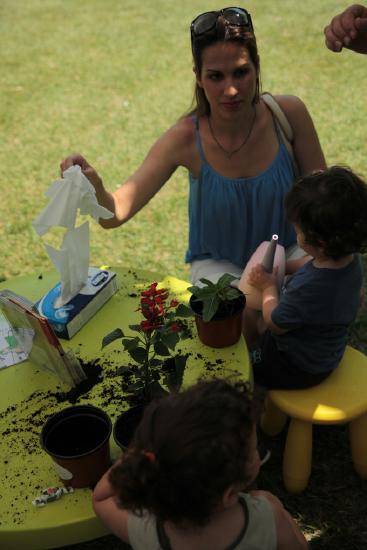
Career Development: Vocation and Identity
A vocation is an occupation to which an individual is particularly drawn.
Learning Objectives
Define the meaning of the word “vocation” and how it impacts the choices people make as far as occupations are concerned
Key Points
- The word ” vocation ” is often used in a Christian religious context where a vocation is a call by God to the individual.
- A person’s vocation is a profession that helps define a person’s identity and directs a person’s interests.
- Since the origination of Vocational Guidance in 1908, by the engineer Frank Parsons, the use of the term ‘vocation’ has evolved to include the notion of using our talents and capabilities to good-effect in choosing and enjoying a career.
Key Terms
- career: One’s calling in life; a person’s occupation; one’s profession.
- vocation: An occupation for which a person is suited, trained, or qualified.
A vocation is a term for an occupation to which a person is especially drawn or for which he or she is suited, trained, or qualified. Though now often used in non-religious contexts, the meanings of the term originated in Christianity.
Use of the word “vocation” before the sixteenth century referred firstly to the “call” by God to the individual, or calling of all humankind to salvation, particularly in the Vulgate, and more specifically to the “vocation to the priesthood,” which is still the usual sense in Roman Catholicism.
The idea of vocation is central to the Christian belief that God has created each person with gifts and talents oriented toward specific purposes and a way of life. This idea of vocation is especially associated with a divine call to service to the Church and humanity through particular vocational life commitments, such as marriage to a particular person, consecration as a religious, ordination to priestly ministry in the Church, and even a holy life as a single person. In the broader sense, Christian vocation includes the use of one’s gifts in their profession, family life, church, and civic commitments for the sake of the greater common good.
Since the origination of Vocational Guidance in 1908, by the engineer Frank Parsons, the use of the term “vocation” has evolved to include the notion of using our talents and capabilities to good effect in choosing and enjoying a career. This semantic expansion has meant some diminishment of reference to the term’s religious meanings in everyday usage.

The Older Years
Old age cannot be exactly defined, but it is often associated with certain activities, such as becoming a grandparent or entering retirement.
Learning Objectives
Discuss some of the implications of old age, particularly in relation to Erikson’s “Eight Stages of Life” and age discrimination
Key Points
- Erik Erikson characterizes old age as a period of “Integrity vs. Despair,” during which a person focuses on reflecting back on their life. Those who are unsuccessful during this phase will feel that their life has been wasted and will experience many regrets.
- Those who feel proud of their accomplishments will feel a sense of integrity. Successfully completing this phase means looking back with few regrets and a general feeling of satisfaction.
- Old age presents some social problems, such as age discrimination. Elderly people are more likely to be victims of abuse, and negative stereotypes are also very common.
Key Terms
- abuse: Physical or verbal maltreatment; injury.
- self-neglect: It refers to behaviors that threaten the person’s own health and safety.
The boundary between middle age and old age cannot be defined exactly because it does not have the same meaning in all societies. People can be considered old because of certain changes in their activities or social roles. For example, people may be considered old when they become grandparents, or when they begin to do less or different work (retirement). Traditionally, the age of 60 was generally seen as the beginning of old age. Most developed world countries have accepted the chronological age of 65 years as a definition of an “elderly” or older person.
According to Erik Erikson’s “Eight Stages of Life” theory, the human personality is developed in a series of eight stages that take place from the time of birth and continue on throughout an individual’s complete life. He characterizes old age as a period of “Integrity vs. Despair,” during which a person focuses on reflecting back on their life. Those who are unsuccessful during this phase will feel that their life has been wasted and will experience many regrets. The individual will be left with feelings of bitterness and despair. Those who feel proud of their accomplishments will feel a sense of integrity. Successfully completing this phase means looking back with few regrets and a general feeling of satisfaction. These individuals will attain wisdom, even when confronting death.
Age discrimination is a prevalent social problem facing the elderly. While discrimination toward the young is primarily visible through behavioral restrictions, discrimination toward the elderly ranges from behavioral restrictions to physical abuse. Abuse of the elderly is a serious problem in the U.S. There are nearly two million cases of elder abuse and self-neglect in the U.S. every year. Abuse refers to psychological/emotional abuse, physical abuse, sexual abuse, and caregiver neglect or financial exploitation, while self-neglect refers to behaviors that threaten the person’s own health and safety.
Are We Prisoners of Socialization?
Who we are as people is determined by both our genes (nature) and our socialization (nurture).
Learning Objectives
Discuss socialization in terms of the nature (biology) versus nurture (social) debate
Key Points
- Some experts assert that who we are is a result of nurture —the relationships and caring that surround us—while others argue that who we are is based entirely in genetics, or ” nature.”
- Twin studies can provide useful insight into how much a certain trait is due to nurture vs. nature.
- Research demonstrates that who we are is affected by both nature (our genetic and hormonal makeup) and nurture (the social environment in which we are raised). Sociology is most concerned with the way that society ’s influence affects our behavior patterns, made clear by the way behavior varies across class and gender.
Key Terms
- socialization: The process of learning one’s culture and how to live within it.
Some experts assert that who we are is a result of nurture—the relationships and caring that surround us. Others argue that who we are is based entirely in genetics. According to this belief, our temperaments, interests, and talents are set before birth. From this perspective, then, who we are depends on nature.
One way that researchers attempt to prove the impact of nature is by studying twins. Some studies followed identical twins who were raised separately. The pairs shared the same genetics, but, in some cases, were socialized in different ways. Instances of this type of situation are rare, but studying the degree to which identical twins raised apart are the same and different can give researchers insight into how our temperaments, preferences, and abilities are shaped by our genetic makeup versus our social environment.
For example, in 1968, twin girls born to a mentally ill mother were put up for adoption. However, they were also separated from each other and raised in different households. The parents, and certainly the babies, did not realize they were one of five pairs of twins who were made subjects of a scientific study (Flam 2007).
In 2003, the two women, then age 35, reunited. Elyse Schein and Paula Bernstein sat together in awe, feeling like they were looking into a mirror. Not only did they look alike, but they behaved alike, using the same hand gestures and facial expressions (Spratling 2007). Studies like these point to the genetic roots of our temperament and behavior.
Though genetics and hormones play an important role in human behavior, sociology’s larger concern is the effect that society has on human behavior, the “nurture” side of the nature versus nurture debate. What race were the twins? From what social class were their parents? What about gender? Religion? All of these factors affect the lives of the twins as much as their genetic makeup and are critical to consider as we look at life through the sociological lens.

Sociologists all recognize the importance of socialization for healthy individual and societal development. But how do scholars working in the three major theoretical paradigms approach this topic? Structural functionalists would say that socialization is essential to society, both because it trains members to operate successfully within it and because it perpetuates culture by transmitting it to new generations. Without socialization, a society’s culture would perish as members died off. A conflict theorist might argue that socialization reproduces inequality from generation to generation by conveying different expectations and norms to those with different social characteristics. For example, individuals are socialized differently by gender, social class, and race. As in the illustration of Chris Langan, this creates different (unequal) opportunities. An interactionist studying socialization is concerned with face-to-face exchanges and symbolic communication. For example, dressing baby boys in blue and baby girls in pink is one small way that messages are conveyed about differences in gender roles.
Socialization is important because it helps uphold societies and cultures; it is also a key part of individual development. Research demonstrates that who we are is affected by both nature (our genetic and hormonal makeup) and nurture (the social environment in which we are raised). Sociology is most concerned with the way that society’s influence affects our behavior patterns, made clear by the way behavior varies across class and gender.
Contributors and Attributions
- Curation and Revision. by: Boundless.com. CC BY-SA
CC licensed content, Specific attribution
- Life course approach. (CC BY-SA; Wikipedia via en.Wikipedia.org/wiki/Life_course_approach)
- Socialization. (CC BY-SA; Wikipedia via en.Wikipedia.org/wiki/Socialization)
- agent. (CC BY-SA; Wiktionary via en.wiktionary.org/wiki/agent)
- socialization. (CC BY-SA; Wiktionary via en.wiktionary.org/wiki/socialization)
- P1000924 | Flickr - Photo Sharing!. (CC BY; Flickr via http://www.flickr.com/photos/wealhtheow/3264047987/)
- Life course approach. (CC BY-SA; Wikipedia via en.Wikipedia.org/wiki/Life_course_approach)
- Introduction to Sociology/Aging. (CC BY-SA; Wikibooks via en.wikibooks.org/wiki/Introduction_to_Sociology/Aging%23Dividing_the_lifespan)
- Boundless. (CC BY-SA; Boundless Learning via www.boundless.com//sociology/definition/life-course)
- age. (CC BY-SA; Wiktionary via en.wiktionary.org/wiki/age)
- socioeconomic. (CC BY-SA; Wiktionary via en.wiktionary.org/wiki/socioeconomic)
- P1000924 | Flickr - Photo Sharing!. (CC BY; Flickr via http://www.flickr.com/photos/wealhtheow/3264047987/)
- Dad | Flickr - Photo Sharing!. (CC BY; Flickr via www.flickr.com/photos/chefranden/5344419117/)
- infant | Flickr - Photo Sharing!. (CC BY-SA; Flickr via http://www.flickr.com/photos/thesoupboy/182075622/)
- Anticipatory socialization. (CC BY-SA; Wikipedia via en.Wikipedia.org/wiki/Anticipatory_socialization)
- Resocialization. (CC BY-SA; Wikipedia via en.Wikipedia.org/wiki/Resocialization)
- Boundless. (CC BY-SA; Boundless Learning via www.boundless.com//sociology/definition/social-interactions)
- Anticipatory socialization. (CC BY-SA; Wikipedia via en.Wikipedia.org/wiki/Anticipatory%20socialization)
- P1000924 | Flickr - Photo Sharing!. (CC BY; Flickr via http://www.flickr.com/photos/wealhtheow/3264047987/)
- Dad | Flickr - Photo Sharing!. (CC BY; Flickr via www.flickr.com/photos/chefranden/5344419117/)
- infant | Flickr - Photo Sharing!. (CC BY-SA; Flickr via http://www.flickr.com/photos/thesoupboy/182075622/)
- Jess at guitar lesson | Flickr - Photo Sharing!. (Public Domain; Flickr via http://www.flickr.com/photos/andybullock77/3413422661/)
- Boundless. (CC BY-SA; Boundless Learning via www.boundless.com//sociology/definition/adult-socialization)
- primary socialization. (CC BY-SA; Wikipedia via en.Wikipedia.org/wiki/primary%20socialization)
- secondary socialization. (CC BY-SA; Wikipedia via en.Wikipedia.org/wiki/secondary%20socialization)
- P1000924 | Flickr - Photo Sharing!. (CC BY; Flickr via http://www.flickr.com/photos/wealhtheow/3264047987/)
- Dad | Flickr - Photo Sharing!. (CC BY; Flickr via www.flickr.com/photos/chefranden/5344419117/)
- infant | Flickr - Photo Sharing!. (CC BY-SA; Flickr via http://www.flickr.com/photos/thesoupboy/182075622/)
- Jess at guitar lesson | Flickr - Photo Sharing!. (Public Domain; Flickr via http://www.flickr.com/photos/andybullock77/3413422661/)
- (CC BY; Flickr via www.flickr.com/photos/chiesadibeinasco/7176410517/)
- THe Buchko Nuclear Family | Flickr - Photo Sharing!. (CC BY; Flickr via http://www.flickr.com/photos/peterhess/3283580040/)
- Childhood. (CC BY-SA; Wikipedia via en.Wikipedia.org/wiki/Childhood)
- adolescence. (CC BY-SA; Wiktionary via en.wiktionary.org/wiki/adolescence)
- Boundless. (CC BY-SA; Boundless Learning via www.boundless.com//sociology/definition/middle-childhood)
- toddlerhood. (CC BY-SA; Wiktionary via en.wiktionary.org/wiki/toddlerhood)
- P1000924 | Flickr - Photo Sharing!. (CC BY; Flickr via http://www.flickr.com/photos/wealhtheow/3264047987/)
- Dad | Flickr - Photo Sharing!. (CC BY; Flickr via www.flickr.com/photos/chefranden/5344419117/)
- infant | Flickr - Photo Sharing!. (CC BY-SA; Flickr via http://www.flickr.com/photos/thesoupboy/182075622/)
- Jess at guitar lesson | Flickr - Photo Sharing!. (Public Domain; Flickr via http://www.flickr.com/photos/andybullock77/3413422661/)
- (CC BY; Flickr via www.flickr.com/photos/chiesadibeinasco/7176410517/)
- THe Buchko Nuclear Family | Flickr - Photo Sharing!. (CC BY; Flickr via http://www.flickr.com/photos/peterhess/3283580040/)
- cheerful5 | Flickr - Photo Sharing!. (CC BY; Flickr via http://www.flickr.com/photos/naph/5025970538/)
- Kids playing at Hands Together To Defend the Children Orphanage Drainage | Flickr - Photo Sharing!. (CC BY; Flickr via http://www.flickr.com/photos/edvolunteers/5043112342/)
- Adolescence. (CC BY-SA; Wikipedia via en.Wikipedia.org/wiki/Adolescence)
- adolescence. (CC BY-SA; Wiktionary via en.wiktionary.org/wiki/adolescence)
- puberty. (CC BY-SA; Wiktionary via en.wiktionary.org/wiki/puberty)
- P1000924 | Flickr - Photo Sharing!. (CC BY; Flickr via http://www.flickr.com/photos/wealhtheow/3264047987/)
- Dad | Flickr - Photo Sharing!. (CC BY; Flickr via www.flickr.com/photos/chefranden/5344419117/)
- infant | Flickr - Photo Sharing!. (CC BY-SA; Flickr via http://www.flickr.com/photos/thesoupboy/182075622/)
- Jess at guitar lesson | Flickr - Photo Sharing!. (Public Domain; Flickr via http://www.flickr.com/photos/andybullock77/3413422661/)
- (CC BY; Flickr via www.flickr.com/photos/chiesadibeinasco/7176410517/)
- THe Buchko Nuclear Family | Flickr - Photo Sharing!. (CC BY; Flickr via http://www.flickr.com/photos/peterhess/3283580040/)
- cheerful5 | Flickr - Photo Sharing!. (CC BY; Flickr via http://www.flickr.com/photos/naph/5025970538/)
- Kids playing at Hands Together To Defend the Children Orphanage Drainage | Flickr - Photo Sharing!. (CC BY; Flickr via http://www.flickr.com/photos/edvolunteers/5043112342/)
- ?nhhhey, can you hr m | Flickr - Photo Sharing!. (CC BY; Flickr via http://www.flickr.com/photos/kooklanekookla/2804496404/)
- Coming of age. (CC BY-SA; Wikipedia via en.Wikipedia.org/wiki/Coming_of_age)
- coming of age. (CC BY-SA; Wiktionary via en.wiktionary.org/wiki/coming_of_age)
- P1000924 | Flickr - Photo Sharing!. (CC BY; Flickr via http://www.flickr.com/photos/wealhtheow/3264047987/)
- Dad | Flickr - Photo Sharing!. (CC BY; Flickr via www.flickr.com/photos/chefranden/5344419117/)
- infant | Flickr - Photo Sharing!. (CC BY-SA; Flickr via http://www.flickr.com/photos/thesoupboy/182075622/)
- Jess at guitar lesson | Flickr - Photo Sharing!. (Public Domain; Flickr via http://www.flickr.com/photos/andybullock77/3413422661/)
- (CC BY; Flickr via www.flickr.com/photos/chiesadibeinasco/7176410517/)
- THe Buchko Nuclear Family | Flickr - Photo Sharing!. (CC BY; Flickr via http://www.flickr.com/photos/peterhess/3283580040/)
- cheerful5 | Flickr - Photo Sharing!. (CC BY; Flickr via http://www.flickr.com/photos/naph/5025970538/)
- Kids playing at Hands Together To Defend the Children Orphanage Drainage | Flickr - Photo Sharing!. (CC BY; Flickr via http://www.flickr.com/photos/edvolunteers/5043112342/)
- ?nhhhey, can you hr m | Flickr - Photo Sharing!. (CC BY; Flickr via http://www.flickr.com/photos/kooklanekookla/2804496404/)
- (CC BY-SA; Wikimedia via Wikimedia)
- Introduction to Sociology/Family. (CC BY-SA; Wikibooks via en.wikibooks.org/wiki/Introduction_to_Sociology/Family%23The_Family_Life_Cycle)
- procreation. (CC BY-SA; Wiktionary via en.wiktionary.org/wiki/procreation)
- marriage. (CC BY-SA; Wiktionary via en.wiktionary.org/wiki/marriage)
- same-sex marriage. (CC BY-SA; Wiktionary via en.wiktionary.org/wiki/same-sex_marriage)
- P1000924 | Flickr - Photo Sharing!. (CC BY; Flickr via http://www.flickr.com/photos/wealhtheow/3264047987/)
- Dad | Flickr - Photo Sharing!. (CC BY; Flickr via www.flickr.com/photos/chefranden/5344419117/)
- infant | Flickr - Photo Sharing!. (CC BY-SA; Flickr via http://www.flickr.com/photos/thesoupboy/182075622/)
- Jess at guitar lesson | Flickr - Photo Sharing!. (Public Domain; Flickr via http://www.flickr.com/photos/andybullock77/3413422661/)
- (CC BY; Flickr via www.flickr.com/photos/chiesadibeinasco/7176410517/)
- THe Buchko Nuclear Family | Flickr - Photo Sharing!. (CC BY; Flickr via http://www.flickr.com/photos/peterhess/3283580040/)
- cheerful5 | Flickr - Photo Sharing!. (CC BY; Flickr via http://www.flickr.com/photos/naph/5025970538/)
- Kids playing at Hands Together To Defend the Children Orphanage Drainage | Flickr - Photo Sharing!. (CC BY; Flickr via http://www.flickr.com/photos/edvolunteers/5043112342/)
- ?nhhhey, can you hr m | Flickr - Photo Sharing!. (CC BY; Flickr via http://www.flickr.com/photos/kooklanekookla/2804496404/)
- (CC BY-SA; Wikimedia via Wikimedia)
- jim & fred after wedding | Flickr - Photo Sharing!. (CC BY; Flickr via http://www.flickr.com/photos/sadsnaps/2983578868/)
- Wedding | Flickr - Photo Sharing!. (CC BY; Flickr via http://www.flickr.com/photos/cameronnordholm/4992681020/)
- Middle age. (CC BY-SA; Wikipedia via en.Wikipedia.org/wiki/Middle_age)
- aging. (CC BY-SA; Wiktionary via en.wiktionary.org/wiki/aging)
- Boundless. (CC BY-SA; Boundless Learning via www.boundless.com//sociology/definition/advanced-maternal-age)
- middle age. (CC BY-SA; Wiktionary via en.wiktionary.org/wiki/middle_age)
- P1000924 | Flickr - Photo Sharing!. (CC BY; Flickr via http://www.flickr.com/photos/wealhtheow/3264047987/)
- Dad | Flickr - Photo Sharing!. (CC BY; Flickr via www.flickr.com/photos/chefranden/5344419117/)
- infant | Flickr - Photo Sharing!. (CC BY-SA; Flickr via http://www.flickr.com/photos/thesoupboy/182075622/)
- Jess at guitar lesson | Flickr - Photo Sharing!. (Public Domain; Flickr via http://www.flickr.com/photos/andybullock77/3413422661/)
- (CC BY; Flickr via www.flickr.com/photos/chiesadibeinasco/7176410517/)
- THe Buchko Nuclear Family | Flickr - Photo Sharing!. (CC BY; Flickr via http://www.flickr.com/photos/peterhess/3283580040/)
- cheerful5 | Flickr - Photo Sharing!. (CC BY; Flickr via http://www.flickr.com/photos/naph/5025970538/)
- Kids playing at Hands Together To Defend the Children Orphanage Drainage | Flickr - Photo Sharing!. (CC BY; Flickr via http://www.flickr.com/photos/edvolunteers/5043112342/)
- ?nhhhey, can you hr m | Flickr - Photo Sharing!. (CC BY; Flickr via http://www.flickr.com/photos/kooklanekookla/2804496404/)
- (CC BY-SA; Wikimedia via Wikimedia)
- jim & fred after wedding | Flickr - Photo Sharing!. (CC BY; Flickr via http://www.flickr.com/photos/sadsnaps/2983578868/)
- Wedding | Flickr - Photo Sharing!. (CC BY; Flickr via http://www.flickr.com/photos/cameronnordholm/4992681020/)
- Diana DeGette | Flickr - Photo Sharing!. (CC BY-SA; Flickr via http://www.flickr.com/photos/denverjeffrey/4722127235/)
- Parenting. (CC BY-SA; Wikipedia via en.Wikipedia.org/wiki/Parenting)
- authoritarian parenting style. (CC BY-SA; Wikipedia via en.Wikipedia.org/wiki/authoritarian%20parenting%20style)
- parenting. (CC BY-SA; Wiktionary via en.wiktionary.org/wiki/parenting)
- family planning. (CC BY-SA; Wiktionary via en.wiktionary.org/wiki/family_planning)
- P1000924 | Flickr - Photo Sharing!. (CC BY; Flickr via http://www.flickr.com/photos/wealhtheow/3264047987/)
- Dad | Flickr - Photo Sharing!. (CC BY; Flickr via www.flickr.com/photos/chefranden/5344419117/)
- infant | Flickr - Photo Sharing!. (CC BY-SA; Flickr via http://www.flickr.com/photos/thesoupboy/182075622/)
- Jess at guitar lesson | Flickr - Photo Sharing!. (Public Domain; Flickr via http://www.flickr.com/photos/andybullock77/3413422661/)
- (CC BY; Flickr via www.flickr.com/photos/chiesadibeinasco/7176410517/)
- THe Buchko Nuclear Family | Flickr - Photo Sharing!. (CC BY; Flickr via http://www.flickr.com/photos/peterhess/3283580040/)
- cheerful5 | Flickr - Photo Sharing!. (CC BY; Flickr via http://www.flickr.com/photos/naph/5025970538/)
- Kids playing at Hands Together To Defend the Children Orphanage Drainage | Flickr - Photo Sharing!. (CC BY; Flickr via http://www.flickr.com/photos/edvolunteers/5043112342/)
- ?nhhhey, can you hr m | Flickr - Photo Sharing!. (CC BY; Flickr via http://www.flickr.com/photos/kooklanekookla/2804496404/)
- (CC BY-SA; Wikimedia via Wikimedia)
- jim & fred after wedding | Flickr - Photo Sharing!. (CC BY; Flickr via http://www.flickr.com/photos/sadsnaps/2983578868/)
- Wedding | Flickr - Photo Sharing!. (CC BY; Flickr via http://www.flickr.com/photos/cameronnordholm/4992681020/)
- Diana DeGette | Flickr - Photo Sharing!. (CC BY-SA; Flickr via http://www.flickr.com/photos/denverjeffrey/4722127235/)
- Libero Day 2011 in Athens Greece - SCA | Flickr - Photo Sharing!. (CC BY; Flickr via www.flickr.com/photos/hygienematters/6162410100/)
- Vocation. (CC BY-SA; Wikipedia via en.Wikipedia.org/wiki/Vocation)
- career. (CC BY-SA; Wiktionary via en.wiktionary.org/wiki/career)
- vocation. (CC BY-SA; Wiktionary via en.wiktionary.org/wiki/vocation)
- P1000924 | Flickr - Photo Sharing!. (CC BY; Flickr via http://www.flickr.com/photos/wealhtheow/3264047987/)
- Dad | Flickr - Photo Sharing!. (CC BY; Flickr via www.flickr.com/photos/chefranden/5344419117/)
- infant | Flickr - Photo Sharing!. (CC BY-SA; Flickr via http://www.flickr.com/photos/thesoupboy/182075622/)
- Jess at guitar lesson | Flickr - Photo Sharing!. (Public Domain; Flickr via http://www.flickr.com/photos/andybullock77/3413422661/)
- (CC BY; Flickr via www.flickr.com/photos/chiesadibeinasco/7176410517/)
- THe Buchko Nuclear Family | Flickr - Photo Sharing!. (CC BY; Flickr via http://www.flickr.com/photos/peterhess/3283580040/)
- cheerful5 | Flickr - Photo Sharing!. (CC BY; Flickr via http://www.flickr.com/photos/naph/5025970538/)
- Kids playing at Hands Together To Defend the Children Orphanage Drainage | Flickr - Photo Sharing!. (CC BY; Flickr via http://www.flickr.com/photos/edvolunteers/5043112342/)
- ?nhhhey, can you hr m | Flickr - Photo Sharing!. (CC BY; Flickr via http://www.flickr.com/photos/kooklanekookla/2804496404/)
- (CC BY-SA; Wikimedia via Wikimedia)
- jim & fred after wedding | Flickr - Photo Sharing!. (CC BY; Flickr via http://www.flickr.com/photos/sadsnaps/2983578868/)
- Wedding | Flickr - Photo Sharing!. (CC BY; Flickr via http://www.flickr.com/photos/cameronnordholm/4992681020/)
- Diana DeGette | Flickr - Photo Sharing!. (CC BY-SA; Flickr via http://www.flickr.com/photos/denverjeffrey/4722127235/)
- Libero Day 2011 in Athens Greece - SCA | Flickr - Photo Sharing!. (CC BY; Flickr via www.flickr.com/photos/hygienematters/6162410100/)
- Doctor | Flickr - Photo Sharing!. (CC BY; Flickr via http://www.flickr.com/photos/edenpictures/4133664894/)
- Introduction to Sociology/Aging. (CC BY-SA; Wikibooks via en.wikibooks.org/wiki/Introduction_to_Sociology/Aging%23Treatment_of_the_Elderly)
- Old age. (CC BY-SA; Wikipedia via en.Wikipedia.org/wiki/Old_age)
- abuse. (CC BY-SA; Wiktionary via en.wiktionary.org/wiki/abuse)
- Boundless. (CC BY-SA; Boundless Learning via www.boundless.com//sociology/definition/self-neglect)
- P1000924 | Flickr - Photo Sharing!. (CC BY; Flickr via http://www.flickr.com/photos/wealhtheow/3264047987/)
- Dad | Flickr - Photo Sharing!. (CC BY; Flickr via www.flickr.com/photos/chefranden/5344419117/)
- infant | Flickr - Photo Sharing!. (CC BY-SA; Flickr via http://www.flickr.com/photos/thesoupboy/182075622/)
- Jess at guitar lesson | Flickr - Photo Sharing!. (Public Domain; Flickr via http://www.flickr.com/photos/andybullock77/3413422661/)
- (CC BY; Flickr via www.flickr.com/photos/chiesadibeinasco/7176410517/)
- THe Buchko Nuclear Family | Flickr - Photo Sharing!. (CC BY; Flickr via http://www.flickr.com/photos/peterhess/3283580040/)
- cheerful5 | Flickr - Photo Sharing!. (CC BY; Flickr via http://www.flickr.com/photos/naph/5025970538/)
- Kids playing at Hands Together To Defend the Children Orphanage Drainage | Flickr - Photo Sharing!. (CC BY; Flickr via http://www.flickr.com/photos/edvolunteers/5043112342/)
- ?nhhhey, can you hr m | Flickr - Photo Sharing!. (CC BY; Flickr via http://www.flickr.com/photos/kooklanekookla/2804496404/)
- (CC BY-SA; Wikimedia via Wikimedia)
- jim & fred after wedding | Flickr - Photo Sharing!. (CC BY; Flickr via http://www.flickr.com/photos/sadsnaps/2983578868/)
- Wedding | Flickr - Photo Sharing!. (CC BY; Flickr via http://www.flickr.com/photos/cameronnordholm/4992681020/)
- Diana DeGette | Flickr - Photo Sharing!. (CC BY-SA; Flickr via http://www.flickr.com/photos/denverjeffrey/4722127235/)
- Libero Day 2011 in Athens Greece - SCA | Flickr - Photo Sharing!. (CC BY; Flickr via www.flickr.com/photos/hygienematters/6162410100/)
- Doctor | Flickr - Photo Sharing!. (CC BY; Flickr via http://www.flickr.com/photos/edenpictures/4133664894/)
- OpenStax, Introduction to Sociology. May 18, 2016. (CC BY; OpenStax CNX via http://cnx.org/contents/afe4332a-c97f-4fc4-be27-4e4d384a32d8@7.23)
- socialization. (CC BY-SA; Wiktionary via en.wiktionary.org/wiki/socialization)
- P1000924 | Flickr - Photo Sharing!. (CC BY; Flickr via http://www.flickr.com/photos/wealhtheow/3264047987/)
- Dad | Flickr - Photo Sharing!. (CC BY; Flickr via www.flickr.com/photos/chefranden/5344419117/)
- infant | Flickr - Photo Sharing!. (CC BY-SA; Flickr via http://www.flickr.com/photos/thesoupboy/182075622/)
- Jess at guitar lesson | Flickr - Photo Sharing!. (Public Domain; Flickr via http://www.flickr.com/photos/andybullock77/3413422661/)
- (CC BY; Flickr via www.flickr.com/photos/chiesadibeinasco/7176410517/)
- THe Buchko Nuclear Family | Flickr - Photo Sharing!. (CC BY; Flickr via http://www.flickr.com/photos/peterhess/3283580040/)
- cheerful5 | Flickr - Photo Sharing!. (CC BY; Flickr via http://www.flickr.com/photos/naph/5025970538/)
- Kids playing at Hands Together To Defend the Children Orphanage Drainage | Flickr - Photo Sharing!. (CC BY; Flickr via http://www.flickr.com/photos/edvolunteers/5043112342/)
- ?nhhhey, can you hr m | Flickr - Photo Sharing!. (CC BY; Flickr via http://www.flickr.com/photos/kooklanekookla/2804496404/)
- (CC BY-SA; Wikimedia via Wikimedia)
- jim & fred after wedding | Flickr - Photo Sharing!. (CC BY; Flickr via http://www.flickr.com/photos/sadsnaps/2983578868/)
- Wedding | Flickr - Photo Sharing!. (CC BY; Flickr via http://www.flickr.com/photos/cameronnordholm/4992681020/)
- Diana DeGette | Flickr - Photo Sharing!. (CC BY-SA; Flickr via http://www.flickr.com/photos/denverjeffrey/4722127235/)
- Libero Day 2011 in Athens Greece - SCA | Flickr - Photo Sharing!. (CC BY; Flickr via www.flickr.com/photos/hygienematters/6162410100/)
- Doctor | Flickr - Photo Sharing!. (CC BY; Flickr via http://www.flickr.com/photos/edenpictures/4133664894/)
- Flickr - The U.S. Army - A family that serves. (Public Domain; Wikimedia via commons.wikimedia.org/wiki/File:Flickr_-_The_U.S._Army_-_A_family_that_serves.jpg)

